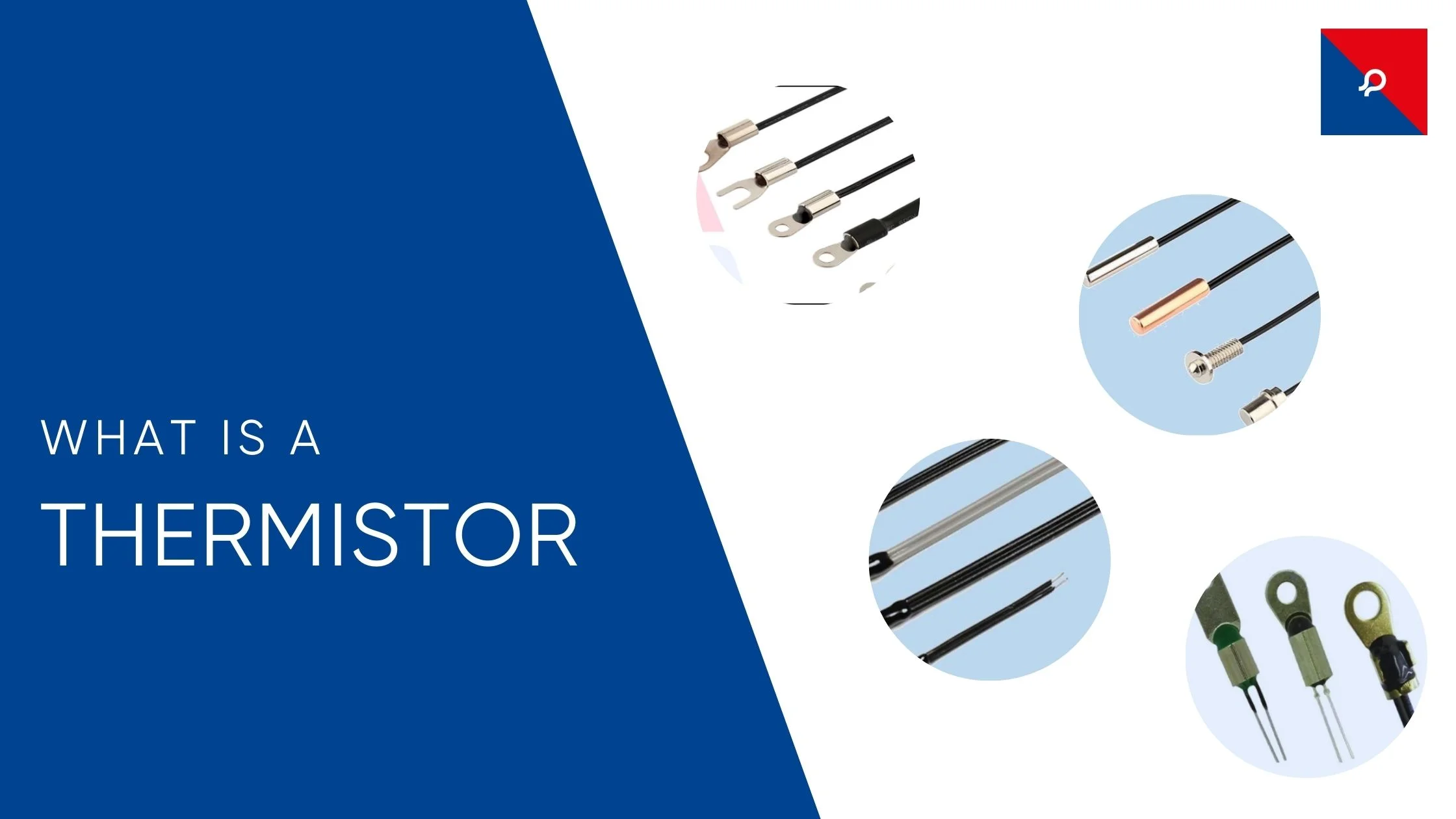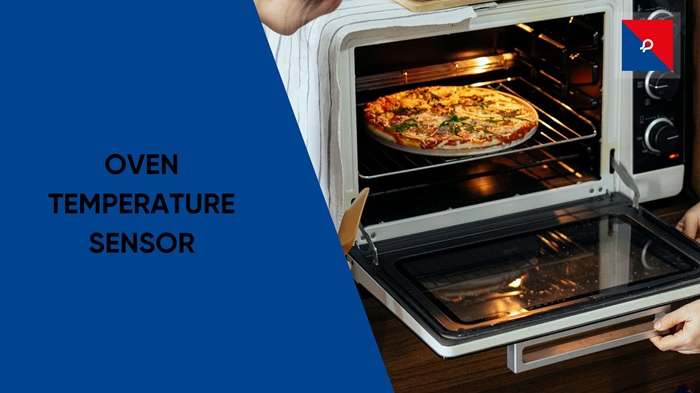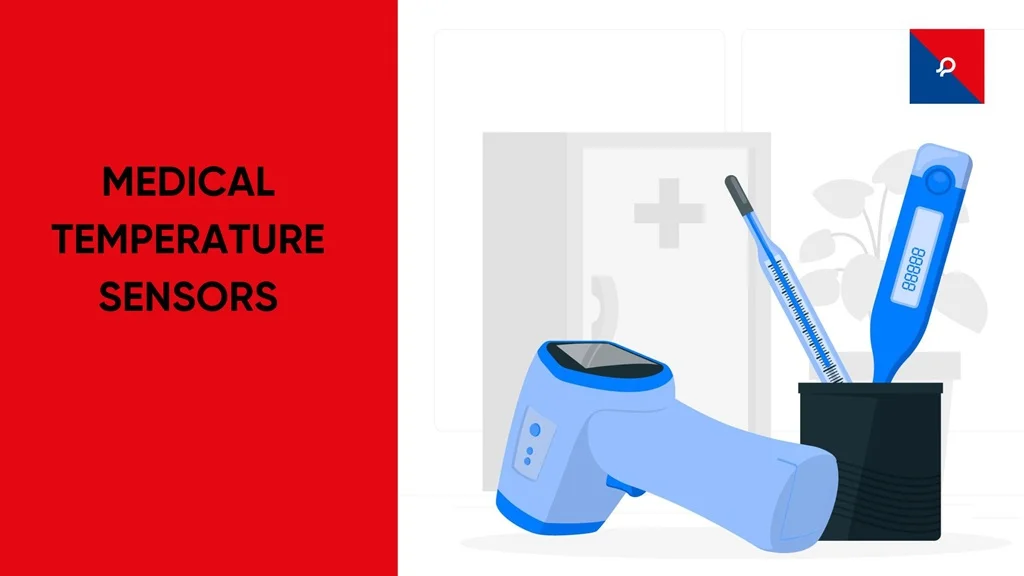
Thermistors: Advantages, Precision and Versatility Across Industries
Thermistors: Advantages, Precision and Versatility Across Industries

A thermistor is a special component of electronics made from thermometers and resistors. It stands totally different from the ordinary resistors, for no resistance changes in relation to the surroundings. Resistance of thermistors is, however, greatly sensitive to variations in temperature. That is exactly the feature that is found extremely useful for very wide ranges of applications, especially where accurate temperature measurement, control, and compensation are really important. This blog is going to take you through, what is a thermistor, its advantages, and more
Thermistors are those kinds of resistors employed in thermometry. They are classified into two main types according to how they change with temperature: Negative Temperature Coefficient (NTC) and Positive Temperature Coefficient (PTC) thermistors. In NTC thermistors, the effect of the increase in temperature is that the resistance decreases. These have been used as temperature sensors and inrush current limiters. PTC thermistors, as opposed to NTC, increase in resistance as the temperature increases. This type of temperature-resistance behaviour is useful for circuit protection and overcurrent detection.
Examples of some industries where thermistors find applications are health care-to-medical devices like thermometers and end-consumer electronics where the battery temperature is monitored. The most important is for HVAC systems, and even household appliances. Be that as it may, the reliability and flexibility shown in their applications make thermistors very important in today`s technology.
Types of Thermistors
Accordingly, thermistors are conducted with two major divisions based on change in resistance with variation in temperature: NTC Thermistors (Negative Temperature Coefficient) and PTC Thermistors (Positive Temperature Coefficient). Each possesses certain characteristics that make it more suited to a distinct application.
1. NTC Thermistors:
As the ambient temperature increases either gradually or suddenly, the resistance value of these types of thermistors begins to decrease. Hence, when properly optimised, these thermistors may even realise the highest performance in controlling and measuring temperature. The majority of the existing applications include temperature measurement of some elements in medical devices, battery packs, and HVAC systems using NTC thermistors. In addition, NTC surroundings are used as inrush-current limiters in electronic circuits, as they initially offer high resistance to the passage of power surges into the devices but then gradually fall as the thermistor heats up.
Learn how to choose NTC Thermistors
2. PTC Thermistors (Positive Temperature Coefficient):
Resistance increases as the temperature goes up in the case of PTC thermistors. These can be used for overcurrent protection applications or self-regulating heat applications. When it comes to using PTC thermistors in the circuit, they act like resettable fuses and break the flow of current during a fault condition. Typical applications for PTCs include aftermarket automotive systems, industrial equipment, and de-icing.
Read more about the difference between NTC and PTC thermistors
How Thermistors Work
Thermistors are made from semiconductor materials like oxides of nickel, manganese, or cobalt and show a predictable change in resistance when temperature goes up or down. Because of this predictable relationship, thermistors detect and measure temperature with high accuracy.
For instance, In an NTC thermistor, the number of free charge carriers, which increase with temperature increase, results in a decrease in resistance. This quality of the thermistor makes it suitable for applications requiring very accurate temperature measurements, as in HVAC control systems and for thermometers in medical uses.
PTC thermistors, on the other hand, serve well as overcurrent protection devices or as self-regulating heating elements because they increase resistance at higher temperatures.
Advantages of Thermistors
Thermistors are highly versatile and efficient temperature-sensing devices that offer several advantages, making them an essential component in a wide range of applications. These advantages include:
1. High Accuracy with High Sensitivity
Thermistors usually achieve an exceptionally high degree of accuracy in measurements. They typically deliver an accuracy of ±0.1°C or better. Therefore, thermistors are particularly suitable for applications that require precise temperature control, for example, medical devices, laboratory instruments, and industrial systems. Their excellent sensitivity could be very useful in a dynamic environment where small changes in temperature will occur frequently, as they can pick up the slightest change in temperature.
2. Compact Versatile Design for Applications
The small physical size of thermistors enables their easy incorporation into contemporary space-limited devices. They are available in various shapes and designs-bead, disc, chip configurations-making them configurable according to the specific needs of the application. For instance, bead thermistors are ideal for fast response applications, whereas chip thermistors are better for mounting directly onto the surface in compact electronic circuitry. Because of this versatility, thermistors can be used seamlessly across a wide wire range-from consumer electronics right through to automotive systems.
3. Economical
Cost is one of the main advantages of thermistors. They are less expensive to manufacture and use compared with other temperature-sensing technologies, making them highly suitable for mass application. In addition, thermistors can provide good performance at low costs, which makes them most appealing to manufacturers and industries focusing so much on efficiency, hence interested in keeping a strict budget.
4. Broad Operating Temperature Range
The thermistors are characterised specifically to operate over a broad temperature range, typically ranging from -50°C to 300°C, depending on the type of thermistor and materials used to fabricate them. This temperature span makes them applicable in a broad area ranging from freezing conditions experienced in cold storage facilities to those experienced during high-temperature industrial processing. This also means that they can run efficiently from very extreme temperatures; as a result, they can be used in highly demanding applications such as aerospace, automobile use, and environmental monitoring.
5. Quick Reaction to Changes in Temperature
They are small and have little thermal mass, making thermistors highly fast-reacting. The crucial thing here is that they give real-time data, which is absolutely important in applications such as medical monitoring, where immediate temperatures can save lives. Their fast response also makes them invaluable in very dynamic systems within which conditions swiftly alter, including HVAC systems and battery management systems.
6. Durability and Reliability
Thermistors are created in such a way that they can be durable and reliable in conditions of harsh operation. They will remain free from rust due to mechanical stresses, free from moisture, and in fact free, or so resistant to several environmental factors, providing long operational life. It can be applied to harsh environments, such as automotive engines, heavy industrial machines, and outdoor systems. Their stability in performance over time leads to higher system reliability and lower maintenance costs.
Applications of Thermistors
With modern technology, thermistors appear as an important factor in productive use applications all over the industries for their reliability, accuracy, and versatility. Here is a closer look at their applications:
1. Modern Automotive Industry
Thermistors have shifted from performance to safety in vehicles and have become authorised applications in numerous sensors. These thermistors measure coolant temperature flowing to the engine and regulate battery temperatures for operating the batteries in an electric vehicle. The system uses thermistors in the latest fleet vehicles for air conditioning.
2. Power Electronics in Lovely Modern Homes
Thermistors are very useful in household appliances like refrigerators, air-conditioners, and washing machines. In these, the main duty of it. This includes sensing internal temperature and keeping the appliances cool in operation for better life expectancy. They prevent overheating in charging devices and batteries by sensing the temperature, thus eliminating or reducing the possibility of hazardous fire conditions and increasing safety in devices.
3. Medical Instruments
Thermistors are extremely useful and accurate for medical precision. They are set into digital thermometers, incubators, and dialysis machines to provision temperature measurements. With these, temperature conditions are also being given and monitored when patients are under treatment and recovery. They are found to be a pillar manufacturing objective of equipment used today in modern healthcare.
4. Industrial Applications
Thermistors are also employed to monitor temperature under control in HVAC systems and industrial boilers and furnaces. systems cover the safe operation of heating sources, and they depend on continuous temperature regulation. With the help of the thermistor embedded in the entire manufacturing process, uniform conditions are ensured, and thus, quality improves in the final manufactured product and process efficiency.
5. Renewable Energy Systems
They are also handy in monitoring temperature changes for optimum performance and damage prevention by overheating in energy systems like solar panels and wind turbines. Thermistors contribute to the advancement of sustainable solutions in energy generation by enhancing energy efficiency.
To sum up, they will be beneficial across several sectors due to excellent adaptability and high accuracy in performance, safety, and energy efficiency.
Comparison with Other Temperature Sensors
Thermistors are generally compared with other temperature-sensing devices like RTD and thermocouples. Though RTDs would be more linear and thermocouples could withstand extremely high temperatures, the thermistor ranks best with respect to its high sensitivity, economy, and very miniature size, similar to the applications involved in using a very precise temperature measurement.
Read more about difference between RTD and Thermistors
Innovations in Thermistor Technology
Latest advances in thermistor technology:
- Miniaturisation: Construction of ultra-small thermistors for the new generation of electronics.
- Flexible Thermistors: Applied to body-worn devices for health monitoring.
- Improved Materials: The newer materials for enhanced durability and accuracy.
Choosing the Right Thermistor
The proper thermistor selection depends on some factors, such as:
- Temperature range where it is meant to operate.
- Required accuracy and sensitivity.
- Environmental conditions.
- Applications (e.g. moisture resistance for outdoor use or not).
These parameters must be understood to ensure that the thermistor performs well and lasts long in its intended application.
Conclusion
Today, almost all modern technologies rely on thermistors for accurate and dependable temperature measurement and control. Improvements in material and design have ensured the continued use of thermistors as the choice for such applications across the globe. This blog has typically addressed the most crucial things about a thermistor, its advantages, and more just under one roof.
Frequently Asked Questions
1. What is a thermistor?
2. What are the advantages of thermistors?
3. What is the difference between NTC and PTC thermistors?
4. Where are thermistors commonly used?
5. What are the limitations of thermistors?

Burnt Biscuits? Blame the Sensor – The Hot Truth About Your Oven’s Temperature Troubles
If your oven’s cooking like it’s got a mind of its own, your temperature sensor might be the silent saboteur. From half-baked casseroles to scorched cookies, we break down how this little sensor works, why it matters, and how to fix it—without losing your cool (or your dinner). A fun, practical guide that’s just as useful as it is digestible.

Hot Stuff: Why Your Engine Can’t Live Without an Exhaust Temperature Sensor
Think exhaust sensors are just another car part? Think again. These tiny guardians track fiery exhaust temps, protect turbos, keep emissions in check—and even help you pass that dreaded test. Dive into the witty, down-to-earth guide on how EGT sensors silently save your engine (and your wallet) every day. Bonus: You’ll sound like a car guru by the end.

Tiny Tech, Big Impact: Inside the World of Medical Temperature Sensors
Discover how medical temperature sensors work, why they're crucial in healthcare, and how health sensors are transforming modern medical diagnostics. From wearable tech to high-precision devices, learn about the different types of temperature sensor medical devices used today.